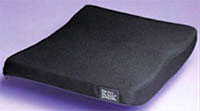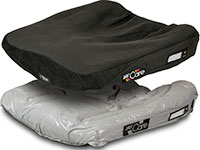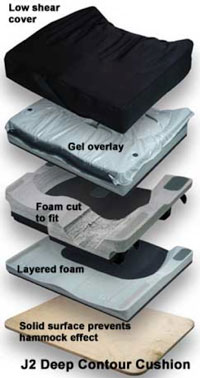Following a stroke, immobility, nutritional deficiencies, decreased immunity, vascular and cardiac disease, and excessive moisture can increase the risk of pressure ulceration. Pressure and tissue ischemia decrease the viability of capillaries and tissues, causing skin breakdown at significantly lower pressures applied for shorter periods of time when compared to healthy older adults.
Pressure ulcer prevention is a multidisciplinary responsibility and starts with identifying risk factors and then taking the appropriate action to avoid skin breakdown or to heal an existing ulceration. Intervention will vary depending on the client, but the main goals should be:
- Remove the pressure.
- Treat existing skin breakdown.
- Initiate client and caregiver education.
There is a variation in time that various tissues can tolerate ischemia before necrosis begins. Superficial dermis can tolerate ischemia for 6 to 8 hours, but necrosis in the muscles and connective tissue begins early, after only 2 hours of ischemia. This is particularly important for clinicians to remember when they see surface skin that appears to have only minimal skin breakdown. Often, much greater tissue damage is present just below the skin’s surface. This finding becomes significant when staging pressure ulcers.
It cannot be overstressed that a debilitated client with ulcers is in a potentially life-threatening situation. Healthcare providers need to respond quickly and appropriately to signs of skin breakdown. While immobile and inactive clients are at particular risk, ambulatory patients with limited mobility or cognitive issues are also at increased risk.
Positioning
Immobile or inactive clients who cannot change their position regularly must have local pressure alleviated through passive repositioning. Always consider postural alignment, distribution of weight, stability, comfort, and pressure relief when positioning a client. Correct sitting position should be encouraged in every situation, whether the client is sitting in a chair, wheelchair, bedside chair, geri-chair, gurney, living-room recliner, car seat, or scooter.
Turning schedules promotes good vascular reperfusion and are an excellent way to prevent pressure ulcers and promote healing of existing ulcers. A typical turning schedule will include a full body position change every 1 to 2 hours with smaller position shifts more often. Clients in chairs should change position every hour with smaller weight shifts every 15 minutes (Sussman & Bates-Jensen, 2012).
A full-body shift means turning the client to a new position (eg, from the left side to the right, or from sitting to either standing or side-lying in bed). Small shifts in position mean shifting the client while keeping the same basic body position. Changing the angle of the trunk or position of the extremities in the side-lying position is an example of a small shift in position. In the case of a chair-bound client, a small shift in position would mean changing the lower-extremity position or repositioning the trunk and hips so that the points of pressure are shifted. Take care to avoid creating shear or friction forces when moving clients from surface to surface or over bed sheets.
Activity and Mobility
It is important to identify clients who can assist with turning and weight shifting and to provide them with the proper instruction and equipment to increase their mobility. Clients who are at least partly mobile should be taught and encouraged to use pressure-relief techniques. These include rolling from side to side, elevating the head and foot of the bed, pushing up from the seat of the chair to clear the buttocks, and shifting weight from side to side and front to back.
To help clients move themselves, overhead trapeze bars can be used to increase mobility and tissue perfusion. Initiating strengthening programs is an excellent way to increase activity in clients suffering the effects of prolonged bed rest. It is up to healthcare providers to support clients in being as active and mobile as possible. All healthcare providers need to be part coach, part educator, part cheerleader and think of creative ways to keep clients active and moving.
Positioning Devices
Pillows, towels, and positioning devices can be used to prevent continued pressure on an area of ulceration and as a part of a turning schedule to prevent skin breakdown. Pillow bridging is an excellent and easy way to minimize prolonged tissue compression. Pillows can be placed between the knees and ankles, under the legs to elevate the heels, or against the body to maintain trunk or extremity position. When elevating the heels, clinicians should not place pillows directly under the heels, but rather under the calf and knee, so that the heel is completely off the bed and the weight of the lower leg is distributed evenly across the pillows.
Types of Pillows for Positioning

Wedges and pillows can be used for positioning.
Support Surfaces
One of the best ways to prevent skin breakdown or treat existing ulcers is through the use of support surfaces. Support surfaces are categorized into two groups
- Pressure-reducing surfaces
- Pressure-relieving surfaces
There are specific guidelines for use of support surfaces, depending upon the state and the facility. The type of support surface used depends on the condition of the client, type of care setting, ease of use, maintenance, cost, and mobility of the client (Sussman & Bates-Jensen, 2012). The primary concern should be the therapeutic benefit to the client.
Pressure-Reducing Surfaces
Pressure-reducing surfaces lower tissue interface pressure, but they do not consistently provide full pressure relief (Sussman & Bates-Jensen, 2012). Common pressure-reducing surfaces include pads, cushions, overlays, and mattresses made from foam and or filled with air, water, gel, or a combination of these products. Pressure-reducing surfaces are best for clients who are at risk for but do not have ulcers, or with clients who have ulcers but can weight-shift and change position independently. Clients who have existing skin breakdown and cannot change position independently should use a pressure-relief surface.
Pressure-reducing surfaces do not replace other efforts to prevent skin breakdown. Without pressure relief through change of position, a client on a pressure-reducing surface can still develop skin breakdown. Clients who are partly mobile should be on a turning schedule and encouraged to participate in moving themselves. Clients with existing skin breakdown should be taught how to position themselves so that they do not weight-bear on areas of ulceration.
Foam pads and foam overlays are popular because of their low cost and ease of use. However, though they do relieve pressure over the sacrum while the client is supine, they do not reduce pressure over bony prominences, such as when clients are on their side. Foam pads and overlays tend to increase body temperature and retain moisture, both of which can increase friction and shear when a client turns or slides down in the bed. They also are easily contaminated, and their effectiveness in preventing ulcers has not been well documented.
Layered Foam Pad

The Jay Basic is a cost-effective, good-quality layered foam pad that is effective for pressure reduction. Used with permission.
Good-quality, layered foam pads have been shown to be effective for pressure reduction. Companies such as Jay Medical and Roho have created a variety of cost-effective pressure-relief cushions made of layered foam. For additional pressure relief, a small gel packet can be added. The gel is strategically placed to reduce pressure over bony prominences. The combination of high-quality, layered foam and light gel packets along with a low shear, breathable fabric cover, provides good pressure reduction.
Combination Gel and Foam Pad

Example of combination gel and foam cushion from Jay.
Good-quality gel pressure-reducing devices can partly and temporarily redistribute weight and reduce shear. They tend not to bottom out or retain heat or moisture, and they have a good clinical reputation for preventing ulcers. Their biggest disadvantages are cost and weight. Many insurance companies do not pay for gel devices except in special circumstances. Poor-quality gel-based cushions do tend to bottom out, especially if the gel is contained in one large bag or chamber rather than several smaller chambers. Poor-quality cushions may not only be useless but may actually increase the risk of skin damage. Watch out for rubber covers or other nonbreathable material that can cause moisture buildup between the skin and the pad and actually increase the risk of skin breakdown.
Pressure-Relieving Surfaces
Pressure-relief cushions and mattresses are a step up from the pressure-reducing surfaces discussed above. When used correctly, pressure-relief mattresses and cushions consistently reduce tissue interface pressure (Sussman & Bates-Jensen, 2012).
Pressure-relief cushions are defined according to the amount of pressure relief that is provided. The least expensive pressure-relief cushions are made from layered, good-quality memory foam or contain multi-chambered air, water, or gel packets.
Layered High-Density Foam and Gel Pad

The J2 deep contour cushion. Note the solid base combined with layered, high-density foam and a gel overlay. The gel is contained in multiple small packets to prevent bottoming out. The foam can be cut by the clinician for custom fitting. Courtesy of Sunrise Medical Corporation.
Additional pressure relief (and additional cost) is provided by combining layers of high-density foam with strategically placed gel packets, or building in multiple—sometimes dozens, as in the Rojo Dry Flotation cushion—individual packets containing gel, air, water, or other pressure-relieving material, often placed on top of a flat, firm surface to prevent the seat from bottoming out or hammocking. The best pressure relief is provided by creating a custom seating system built to address the individual needs of a specific client.
A pressure-relief mattress is recommended for immobile clients who are at a high risk for skin breakdown or for immobile clients who have existing skin breakdown. Pressure-relief cushions are recommended for clients at high risk for skin breakdown and for clients with active skin breakdown who need to get out of bed for health reasons and for position change.
Pressure-relief mattresses are commonly grouped as low-air, high-air, or dynamic-air devices. These types of pressure-relief mattresses are usually covered by insurance but the quality varies widely from glorified air mattresses to sophisticated, high-tech, low-shear mattresses that can make a huge difference in the medical outcome and success of treatment.
The covers of cushions and mattresses are important. They should be made of a breathable, low-shear material that wicks moisture away from the skin and prevents moisture buildup. Keep in mind that no matter how good the cushion or mattress, no system can prevent skin breakdown (or promote healing) if the client stays in one position for too long, has poor body alignment, is sitting or lying on a moist cushion or mattress, or experiences skin shear because of poor positioning.
